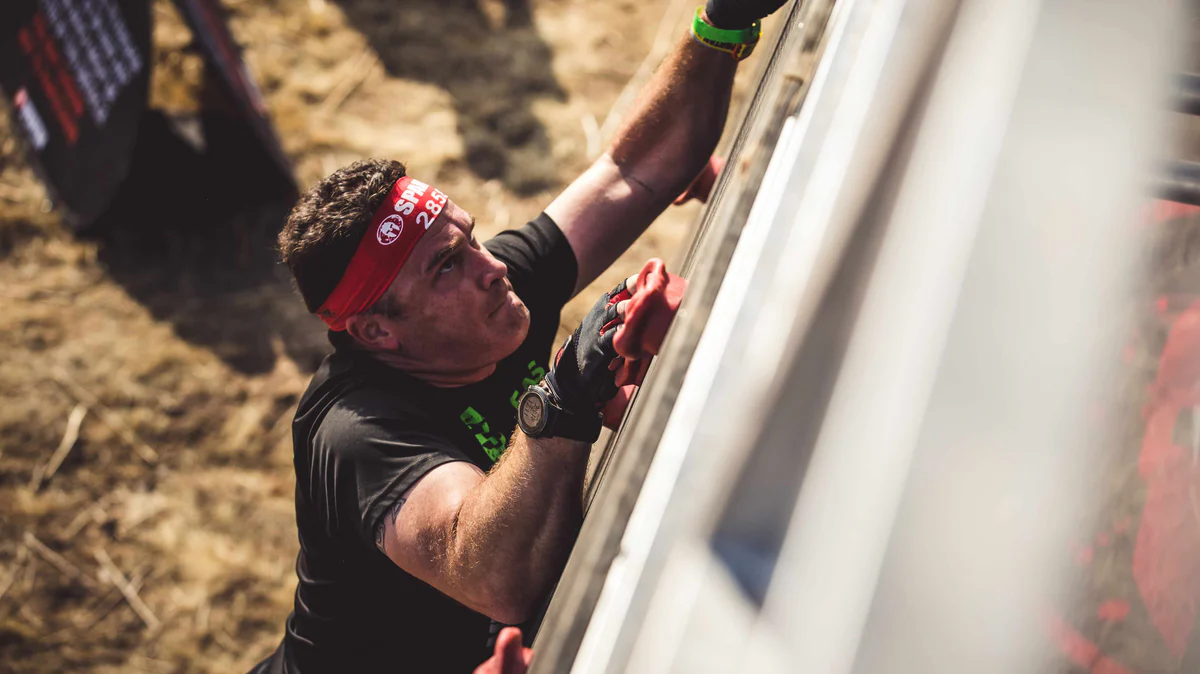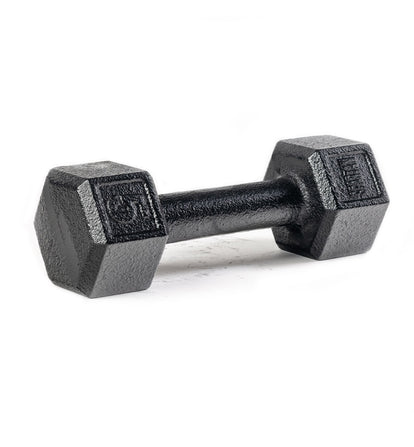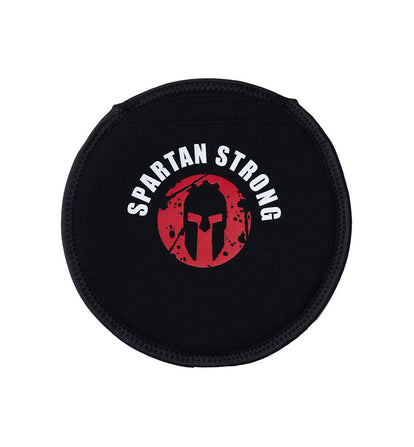10 Best Forearm Exercises for Grip Strength And Muscle Growth

Believe it or not, your forearm strength can often make or break your success in a Spartan race, especially as you tire out near the end of the race and still have several grip-strength obstacles facing you down. Add these 10 forearm exercises into your training schedule to make sure you cross the finish line strong.
When training for a Spartan race, you need to strengthen the muscles of your forearms in ways that will transfer directly to obstacle course racing. However, some of those muscles are vastly overlooked in most training. Here are the 10 best forearm exercises to target all parts of the forearm for better grip strength and bigger muscles.
Related: The 20 Best Exercises for Your Legs
What Are the Best Forearm Exercises?

1. Dumbbell Wrist Curl
How to do a dumbbell wrist curl
- Stand holding a dumbbell with a supinated grip (palms facing up) and your elbows flexed at 90 degrees.
- Lower the dumbbell onto the tips of your fingers while keeping your elbows in place.
- Raise the dumbbell from the tips of the fingers all of the way back up the palm. Flex the wrist at the end of this motion.
Primary Muscles Worked: flexor carpi ulnaris, flexor carpi radialis, palmaris longus
Variations: Kneel in front of a bench and support your forearms on the edge so that only your wrists hang on the edge. Or, you can use a barbell and perform a seated barbell wrist curl with both hands while your forearms are supported on your thighs.
Obstacle Tip: Working these muscles assists in getting over walls and hurdles, grabbing and swinging on the Monkey Bars, the Twister, the Multi-Rig, and Olympus components, and holding the bucket during the Bucket Carry.
2. Dumbbell Wrist Extension
How to do a dumbbell wrist extension
- Stand holding a dumbbell with a pronated grip (palms facing downward) and your elbows flexed at 90 degrees.
- Bring the top of your hands towards the ceiling, extending the wrist.
Primary Muscles Worked: extensor carpi ulnaris, extensor carpi radialis longus and brevis
Variations: Use the same variations as wrist curl, except with your palms facing downward.
Related: The 10 Best Exercises for Your Chest
Obstacle Tip: These muscles assist in climbing obstacles like the Z Wall and Olympus. Once you grab a rock climbing hold or chain, it’s the transition between grabbing it and letting it go, during which you extend your wrist and fingers.

3. Farmer’s Carry
How to do a farmer's carry
- Stand with an upright posture holding a dumbbell, water pail, or jerry can in each hand.
- Walk forward for 50-100 yards. If you need to take a break and put the weights down after 50 yards, do that.
- Complete 3 sets of 100 yards for more advanced athletes.
Primary Muscles Worked: brachioradialis, flexor carpi ulnaris.
Obstacle Tips: Spartan races call for jerry can carries (Stadions in particular), bucket carries, and sandbag carries — all of which use the entire body. The use of your forearm muscles is key when hanging on to the objects for an extended period of time.

4. Pinch Grip Transfer
How to do a pinch grip transfer
- Stand holding one weight plate or a sandbag (like a Spartan Pancake) between the thumb and fingers, pinching it.
- Raise it forward while keeping your arm straight until it’s at eye level. Raise the other arm to eye level.
- Transfer the weight to the other hand by pinching it with the second hand, making the exchange at eye level.
- Return the weight back down to your side. Repeat, switching the weight from one side to the other.
Primary Muscles Worked: flexor digitorum profundus, flexor digitorum superficialis, extensor digitorum
Related: The 20 Best Exercises for Your Shoulders
Obstacle Tips: Flexing the fingers when grabbing the weight and extending them when releasing is preparing you to grab the boulders on the Z Wall or the chains of Olympus.
5. Dead Hang
How to do a dead hang
- Using an overhand grip, grab a pull-up bar with your hands shoulder width apart and your arms extended.
- Hold this position for 60 seconds for beginner/intermediate athletes, and 2 minutes for more advanced athletes.
Variations: Loop a towel around the bar, stand parallel and under the bar, and then hang from the ends of the towel to increase activation of the forearm flexors. As a further modification, use a suspension trainer and hold the handles with your arms extended and your legs extended out in front of you in an L shape.
Related: Why Doing a Daily Dead Hang Can Save Your Life
6. Dumbbell Pronation/Supination
How to do dumbbell pronations
- Grab a dumbbell in one hand with your forearm supported on a bench or table, and with your palm facing up.
- Rotate your hand so that your palm is facing downward. This is called pronation.
Muscles Worked: pronator teres, pronator quadratus
How to do dumbbell supinations
- Grab a dumbbell in one hand with your forearm supported on a bench or table, and with your palm facing down.
- Rotate your hand so that your palm is facing up. This is called supination.
Muscles Worked: supinator, biceps brachhi, brachioradialis
Obstacle Tips: The movement of the Twister's bars causes the forearm muscles to begin to pronate and supinate. Also, transitioning between holds on the Multi-Rig may require rotation of the forearm, such as going from holding a ring in a neutral grip to holding a bar in an overhand grip.

7. Ulnar/Radial Deviation
How to ulnar deviations
- Grab a light dumbbell or resistance tube/therapy band in the palm of one hand. Support your wrist at the edge of a table or bench.
- Move your wrist downward, bringing your pinky toward your elbow. If you're using a band, this means that the band is anchored above your wrist, or that you’re holding it above your wrist with the other hand.
- Return the weight from the bottom to the top.
Muscles Worked: extensor carpi ulnaris, flexor carpi ulnaris
How to do radial deviations
- Grab a light dumbbell or resistance tube/therapy band in the palm of one hand. Support your wrist at the edge of a table or bench.
- Move your wrist upward, bringing your thumb toward your elbow. If you're using a band, this means that the band is anchored below your wrist and under the table, or that you’re holding it with the opposite hand.
- Return the weight from the top to the bottom.
Muscles Worked: extensor carpi radialis longus and brevis, flexor carpi radialis.
8. Grip Clench
How to do a grip clench
- Hold a spring loaded grip strengthener, such as the IronMind Captains of Crush Hand Gripper. Squeeze the tool together.
- Pause for 2-3 seconds, and then release.
Muscles Worked: flexor pollicis longus, adductor pollicis
Variations: Squeeze a tennis ball or foam stress ball to work the forearm and finger flexor muscles.
Related: The 30 Best Exercises for Functional Strength and Mobility
Obstacle Tip: A strong crush grip — or the ability to squeeze something between your fingers and palm — is essential for fast completion of the Plate Drag and Hercules Hoist, where you’re using your grip and upper-body muscles to move a heavy object.
9. Finger Extension
How to do finger extensions
- Touch your four fingers to your thumb like you’re sprinkling salt, then place a rubber band around all of your fingertips.
- Open your hand against the rubber bands until the fingers are fully extended. Return the fingers back to a pinched position. That’s one rep.
Variations: Use rubber bands that are designed for extensors such as Hand X Band to really stay on top of your forearm training.
Obstacle Tips: Stronger extensors will help prevent injuries and pain in your elbows. Overusing the crush grip muscles (flexors) without any use of the extensors may create an imbalance, leading to medial epicondylitis (tennis elbow) or carpal tunnel syndrome.

10. Bicep Curl
How to do a bicep curl
- Hold a dumbbell or barbell with your hands supinated (palms facing up) and your arms extended down and outside of your hips.
- Bring the weights toward your chest by flexing your elbows. Squeeze at the top.
- Slowly return the weights back down under control.
Variations: Don’t always just do supinated curls. Do reverse (pronated curls) to work the brachialis and hammer (neutral grip) curl to target the brachioradialis.
Muscles Worked: biceps brachii, brachialis, brachioradialis
Obstacle Tips: Even though elbow flexion itself isn’t an obstacle, the biceps brachii assists during strength obstacles like the Plate Drag, Bucket Carry, and in climbing obstacles such as the Tyrolean Traverse and Rope Climb.















